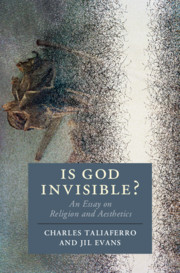Book contents
- Is God Invisible?
- Cambridge Studies in Religion, Philosophy, and Society
- Is God Invisible?
- Copyright page
- Contents
- Figures
- Web Figures
- Acknowledgments
- Introduction
- 1 Aesthetic Personalism
- 2 Is God Invisible?
- 3 The Gates of Perception
- 4 The Perception of Gates
- 5 The Beautiful Gate
- 6 Revealing and Concealing
- 7 Public Perception of Religious and Art Objects
- 8 A Personal Guide to the Aesthetic Experience of Works of Art
- Epilogue
- Index
6 - Revealing and Concealing
Published online by Cambridge University Press: 30 March 2021
- Is God Invisible?
- Cambridge Studies in Religion, Philosophy, and Society
- Is God Invisible?
- Copyright page
- Contents
- Figures
- Web Figures
- Acknowledgments
- Introduction
- 1 Aesthetic Personalism
- 2 Is God Invisible?
- 3 The Gates of Perception
- 4 The Perception of Gates
- 5 The Beautiful Gate
- 6 Revealing and Concealing
- 7 Public Perception of Religious and Art Objects
- 8 A Personal Guide to the Aesthetic Experience of Works of Art
- Epilogue
- Index
Summary
Art is generative by nature, revealing and concealing our intentions and identities. Form, by which we mean embodied content, has a unique relationship with each viewer, reader, or listener of call and response, and that is why the meaning of a work of art cannot be easily fixed or guaranteed. Art is a form of life.
The valence of a work of art is experienced over time. Even in works of art that fail to reach an impact many of us would consider profound, meaning can’t be grasped in a glance or a moment of listening. Meaning in art often accrues by degrees as the world of the art’s embodied content meets us in what we see, touch, hear, smell, and taste. And the world that art creates is formed through an act of poesis (from the Greek for to make), with intention, but not with a means to stabilize meaning(s) in its encounters with viewers over time, in some cases, millennia. As a form of life, works of art may have not just histories but also biographies (extended narrative lives), and sometimes works of art die when they disappear from public view or consciousness.
- Type
- Chapter
- Information
- Is God Invisible?An Essay on Religion and Aesthetics, pp. 113 - 138Publisher: Cambridge University PressPrint publication year: 2021

